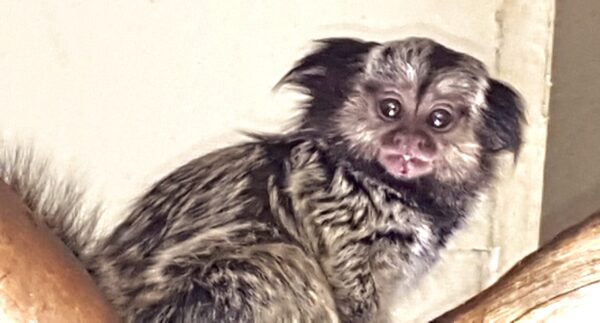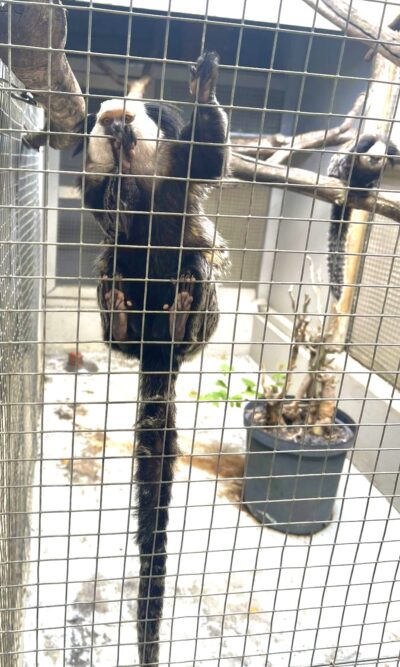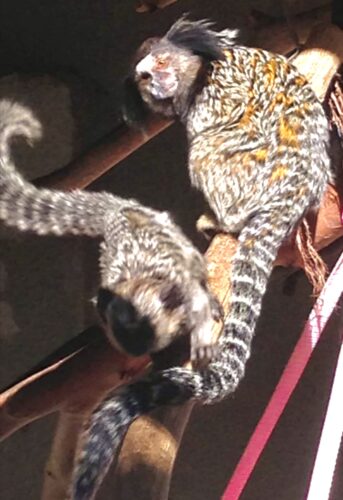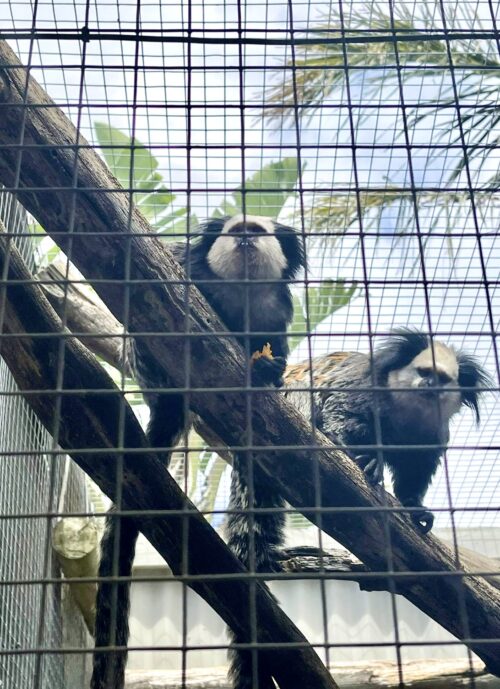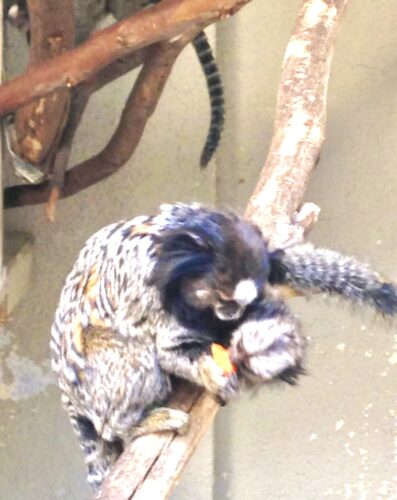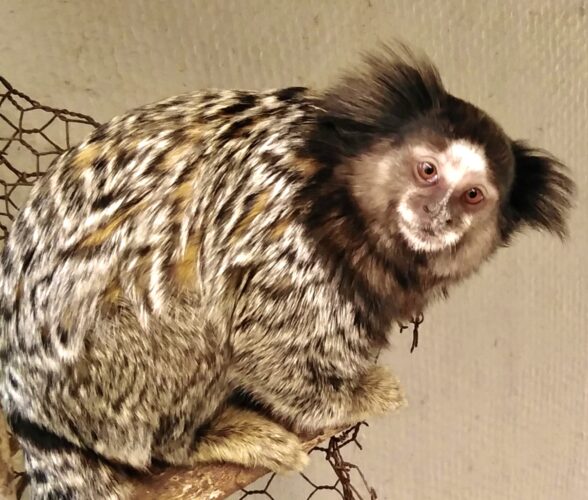
Callithrix Pencillata
Our black-tufted marmoset (Callithrix penicillata), also known as ‘Mico-estrela’ in Portuguese, is a species of New World Primatethat lives primarily in the neo-tropical gallery forests of the Brazilians Central Plateau. It ranges from Bahia to Paraná and as far inland asGoiás, between 14-25ºC south of the equator, and can commonly be seen in the City of Rio de Janeiro where it was introduced. This marmoset typically resides in rainforests, living an abhoreal life high in the trees, but below the canopy; they are only rarely spotted near the ground!
We have included official References below should you wish to learn more about the Black-tufted Marmoset..
References:
- Groves, C. P. (2005). Wilson, D. E.; Reeder, D. M. (eds.). Mammal Species of the World: A Taxonomic and Geographic Reference (3rd ed.). Baltimore: Johns Hopkins University Press. p. 132. ISBN 0-801-88221-4. OCLC 62265494.
- ^ Valle, R.R.; Ruiz-Miranda, C.R.; Pereira, D.G.; Rímoli, J.; Bicca-Marques, J.C.; Jerusalinsky, L.; Valença-Montenegro, M.M.; Mittermeier, R.A. (2021). “Callithrix penicillata“. IUCN Red List of Threatened Species. 2021: e.T41519A191705321. doi:10.2305/IUCN.UK.2021-1.RLTS.T41519A191705321.en. Retrieved 19 November 2021.
- Barros, M.; Alencar, C.; Tomaz, C. (2004). “Differences in Aerial and Terrestrial Visual Scanning in Captive Black Tufted-ear Marmosets (Callithrix penicillata) Exposed to a Novel Environment”. Folia Primatologica. 75 (2): 85–91. doi:10.1159/000076266. PMID 15010580. S2CID 28771129.
- Boudet, C. (2004). “Mammal’s Planet”. Archived from the original on October 11, 2008. Retrieved March 30, 2004.
- de Figueiredo, R.; Longatti, C. (1997). “Ecological Aspects of the Dispersal of a Melastomatacae by Marmosets and Howler Monkeys in a Semideciduous Forest in Southeastern Brazil”. Revue d’Écologie (La Terre et la Vie). 52 (1): 4–5.
- Elliot, D. (1913). A Review of The Primates. New York: American Museum of Natural History.
- Guerra, R.; Takase, E.; Santos, C. (1998). “Cross-fostering between two species of marmosets (Callithrix jacchus and Callithrix penicillata)” (PDF). Revista Brasileira de Biologia. 58 (4): 665–669. doi:10.1590/S0034-71081998000400014. PMID 10049101.
- Lacher, T.; Bouchardet da Fonseca, G.; Alves, C.; Magalhaes-Castro, B. (1981). “Exudate-Eating, Scent-Marking, and Territoriality in Wild Populations of Marmosets”. Animal Behaviour. 29(1): 306–307. doi:10.1016/S0003-3472(81)80185-6. S2CID 53150826.
- Miranda, G.; Faria, D. (2001). “Ecological Aspects of Black-Pincelled Marmoset (Callithrix penicillata) in the Cerradao and Dense Cerradao of the Brazilian Central Plateau”. Brazilian Journal of Biology. 61 (3): 397–404. doi:10.1590/S1519-69842001000300008. PMID 11706566.
- Mittermeier, R. (1986). “Primate Conservation Priorities in the Neotropical Region”. In Benirschke, K. (ed.). Primates: The Road to Self-Sustaining Populations. West Hanover, Massachusetts: Springer-Verlag. pp. 221–240. ISBN 0-387-96270-0.
- Rosenberg, S. (2004). “Penicillata Marmoset: (Callithrix Penicillata)”. Archived from the original on April 15, 2004. Retrieved March 31, 2004.
- Rylands, A. B.; Mittermeier, R. A. (2009). “The Diversity of the New World Primates (Platyrrhini)”. In Garber PA; Estrada A; Bicca-Marques JC; Heymann EW; Strier KB (eds.). South American Primates: Comparative Perspectives in the Study of Behavior, Ecology, and Conservation. Springer. pp. 23–54. ISBN 978-0-387-78704-6
courtesy of Wikipedia

